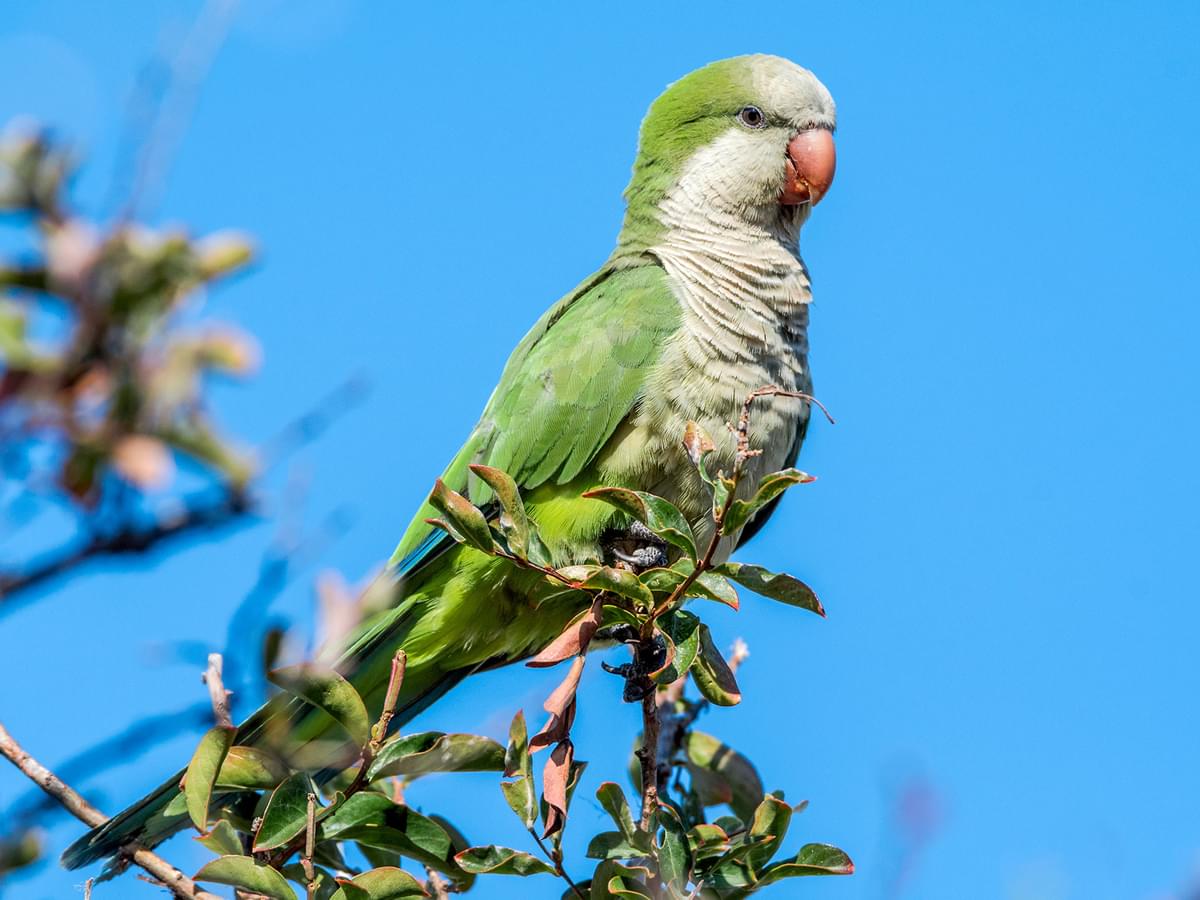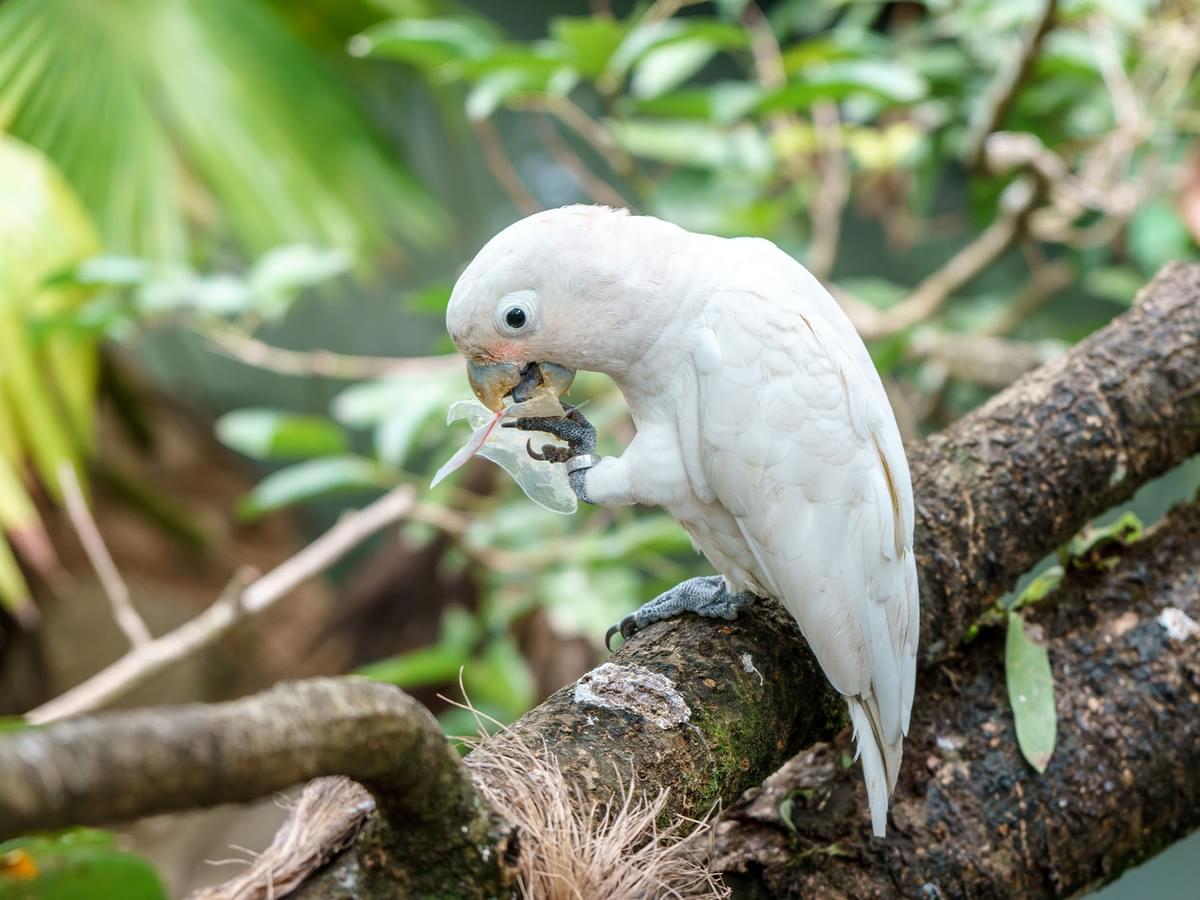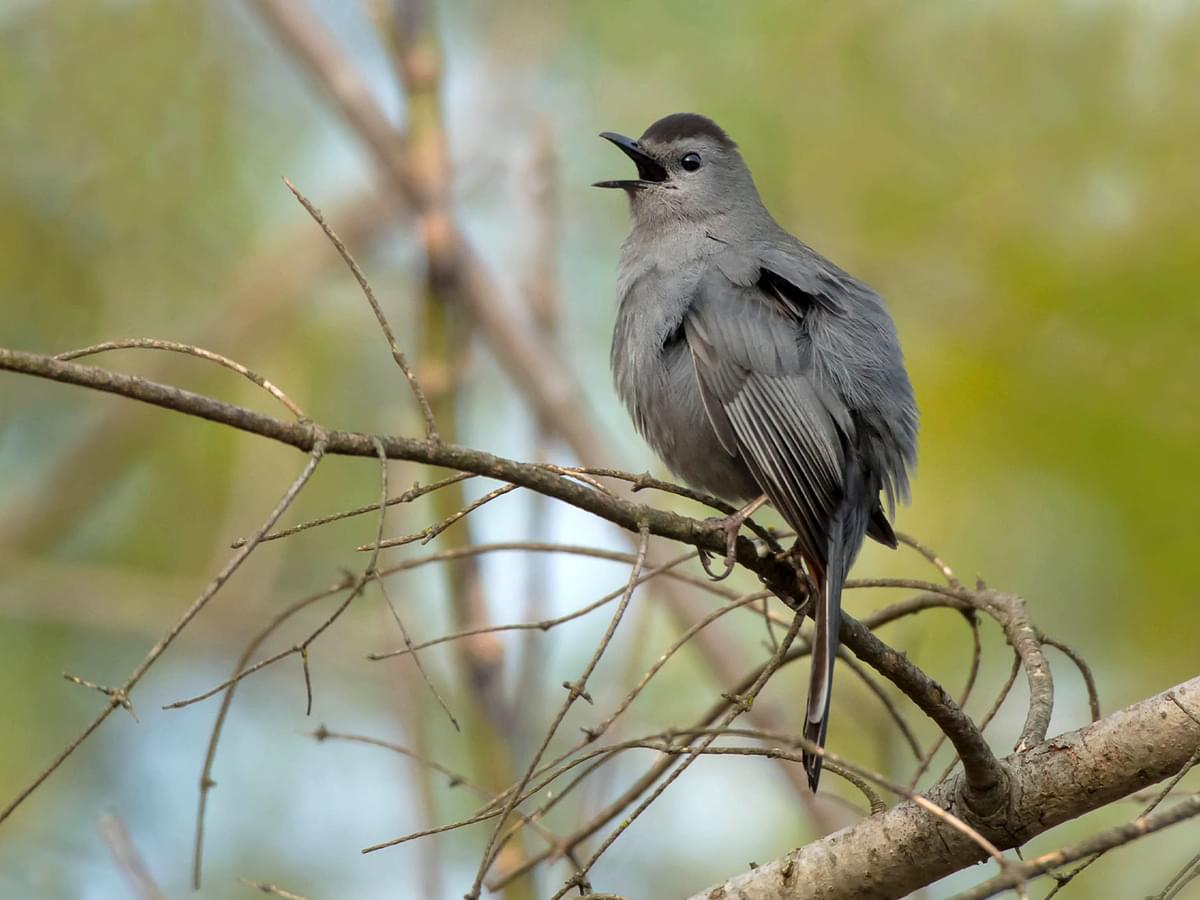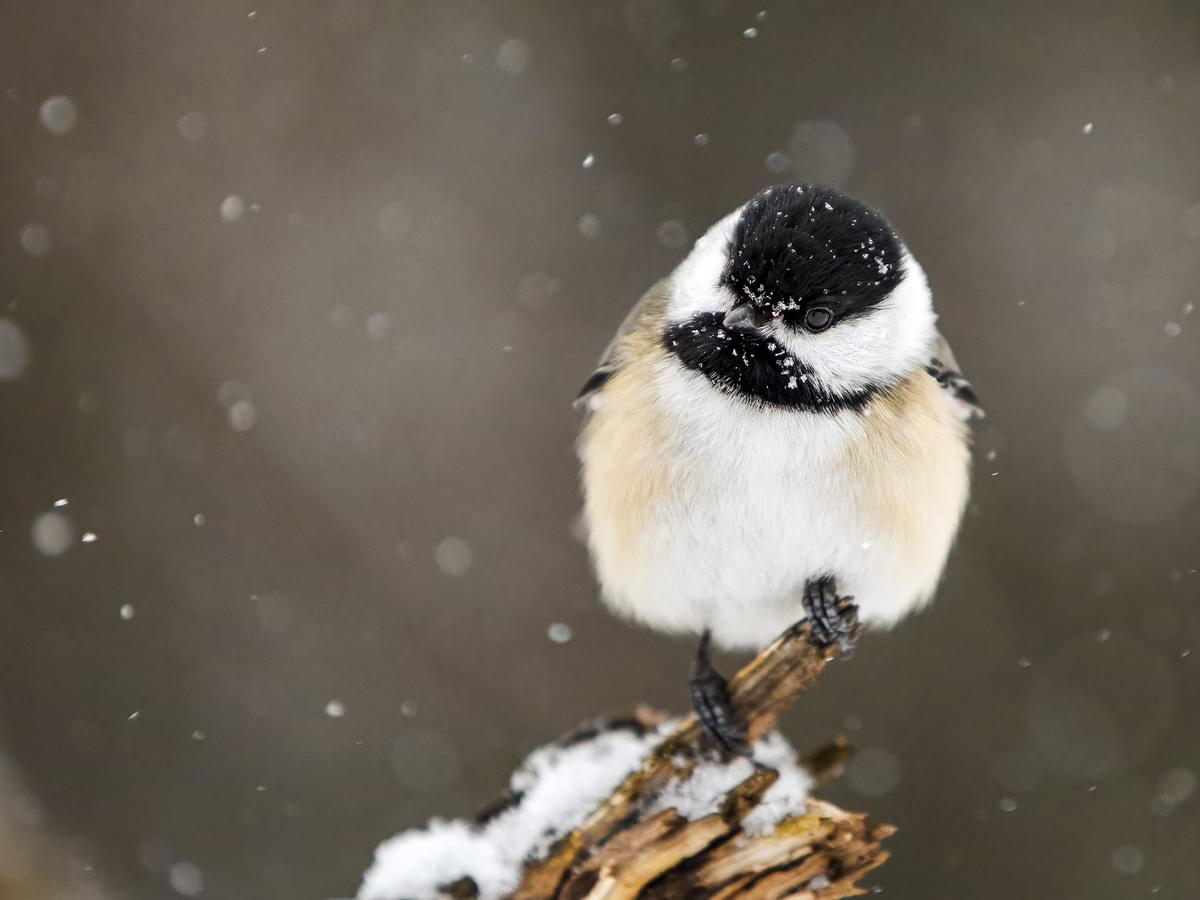Learning and Intelligence

Overview of Bird Learning and Intelligence
When you think of the word intelligence, your mind might automatically go to humans and then, perhaps, to other mammals like chimps, dolphins, and dogs. However, science is uncovering more and more about avian intelligence.
It turns out that birds are a lot smarter than we thought. Rather than mindlessly acting on instinct, our feathered friends can memorize information, learn to manipulate tools, predict outcomes, and perform complex sequences to achieve their goals.
Studying bird intelligence opens up a fascinating window into the evolution of cognition in a completely different class to our own. In this guide, we’ll introduce the avian brain, discover how birds learn, and highlight a few of the world’s smartest species.

The The Fork-tailed Drongo (pictured) is a feisty African songbird that uses deception to get a meal
The Science of Bird Intelligence
Brain Structure and Neurobiology
Apart from coordinating bodily functions, birds use their brains to process and analyze data gathered through vision, hearing, and other sensory receptors. They can then store this information and learn from it.
Structurally, the avian brain has a relatively large optic lobe for processing visual, auditory, and tactile data and a reduced olfactory bulb because birds rely less on their sense of smell. Their brains are also complete with a cerebellum (co-ordinates skeletal muscles), medulla (controls cardiovascular functions), and cerebrum/telencephalon (processing sensory data, navigation).
Our understanding of the avian brain structure has been totally rewritten after early scientists dismissed the bird brain as a rather primitive organ. We now know that birds are highly intelligent creatures, sometimes even comparable with the great apes.
Part of the trouble was that birds don’t have a neocortex, the part of the brain associated with high-order intelligence in mammals. However, we now know that birds use a different but comparable region known as the dorsal ventricular ridge (DVR) for similar functions. The DVR is located in the pallium, which is part of the telencephalon.

Pictured: A Sulphur-crested Cockatoo. Apart from coordinating bodily functions, birds use their brains to process and analyze data gathered through vision, hearing, and other sensory receptors
Cognitive Abilities
Birds have well-developed senses. Their vision and hearing are incredibly fine-tuned, although birds also interpret the world through touch, smell, and taste. They act on this information instinctually but also use cognition to understand, learn, memorize, and use it to their benefit.
Cognitive abilities aren’t shared evenly across the bird families, and some species are far more intelligent than others. Social and opportunistic species like Crows that can exploit many different food sources tend to be smarter than birds that focus on a specific niche and food source.
The Psittaciformes (Parrots, Cockatoos, etc.) and the Corvidae (Crows, Ravens, etc.) stand out above other birds when it comes to cognitive abilities. Their telencephalons (forebrains) are in similar proportion to those of apes. These birds demonstrate complex social behaviors, advanced problem-solving skills, expert mimicry, and even tool use in the case of corvids.
While different in many ways, these bird groups have one thing in common. Both develop relatively slowly and gain their independence later than others, allowing more time for brain development.

Pictured: Two Crows drinking from a leaking tap
Learning Processes in Birds
Imitative Learning
Imitating their parents and other birds is an essential mechanism of social learning that teaches birds to forage, migrate, choose a mate, recognize threats, and sing.
Birds learn to sing at a young age by memorizing and imitating the songs they hear. Interestingly, they are predisposed to imitate the songs of their own species rather than all the other sounds in their environment.
In most cases, birds learn a finite range of vocalizations typical of their species. However, some can imitate and learn new sounds at any stage of their lives. Mockingbirds, Crows, Starlings, Mynas, Lyrebirds, and many songbirds are good at mimicking (imitating) the calls of other birds, and even human speech and other sounds.
Many birds display intelligence by their ability to observe and imitate the actions of others, so imitative learning is not limited to vocalizations. Buderigars and Parrots can learn new actions by watching the way other birds and animals solve problems. Why waste time ‘reinventing the wheel’ right?
Other Types of Social Learning
Birds do not only learn from other birds by imitation. Parent birds may guide and teach youngsters by actions and sounds that are nothing like the action being taught.
Ptarmigans, for example, guide their young to high-quality food sources using specific calls, while female Zebra Finches can teach young birds how to sing by responding to their attempts with physical cues.

The Myna (pictured) and many songbirds are good at mimicking (imitating) the calls of other birds, and even human speech and other sounds
Problem-Solving Abilities
Tool Use
Technology and tool use set humans apart from most other life on Earth, and their discoveries were major milestones for our success. However, we are not the only animals that use tools.
Several bird species are known to use tools to access food. Woodpecker Finches use thorns to impale prey, New Caledonian Crows use hook-shaped sticks for retrieving food items, Egyptian Vultures use rocks for breaking shells, and Striated Herons even use bait to lure fish into striking range.
As remarkable as these examples are, most wild birds are pretty limited in their choice and use of tools. The problem-solving skills of birds are most apparent in novel laboratory settings where they face challenges unlike anything nature and experience have prepared them for.
Crows, in particular, shine under these circumstances, and some have been demonstrated to use multiple tools in long chains of actions to achieve a single goal.

Pictured: An Egyptian Vulture. Several bird species are known to use tools to access food
Memory and Spatial Awareness
Birds have excellent memory, which is very important for species like Chickadees and Jays that cache (store) food for the winter and migratory birds that return to the same nesting grounds year after year.
However, memory is not only useful for storing spatial data. Without memory, birds would have to re-learn the critical skills and behaviors they rely on for foraging and avoiding danger.
Examples of bird memory
A study on North Island Robins showed that these small songbirds can remember how to perform a learned task after a break of nearly two years. That’s a significant chunk of their typical life expectancy!
Crows, Magpies, and Skuas can remember the faces of individual humans that have threatened them. Their memory allows them to avoid enemies and share information about dangers while minimizing unnecessary defensive behaviors around harmless individuals.

Crows, Magpies (pictured) and Skuas can remember the faces of individual humans that have threatened them
Intelligent Bird Species
A Focus on Notable Species
Some species stand out as heavyweights on the bird intelligence scale. Read on to learn about a few selected bird brains and their remarkable abilities.
Kea (Nestor notabilis)
The Kea, a large species of Parrot from New Zealand, is a social and intelligent bird that has been the subject of various learning studies.
These adaptable birds can learn complex tasks by watching other Keas and even combine memory and probability in problem-solving and decision-making. These behaviors are seen in both wild situations and scientific experiments.
New Caledonian Crow (Corvus moneduloides)
The New Caledonian Crow may be the world’s smartest bird. Not only do they use tools, but they also fashion them and keep their favorite ones safe for future use. It wasn’t that long ago (in evolutionary time) that humans first learned a similar skillset!
Fork-tailed Drongo (Dicrurus adsimilis)
The Fork-tailed Drongo is a feisty African songbird that uses deception to get a meal. These birds watch other foraging birds and animals until their target finds a prey item like a juicy insect.
The Drongo then produces a (false) alarm call which sends its victim fleeing for cover, leaving the deceptive Drongo to swoop in and steal a meal. Remarkably, these birds can mimic the alarm calls of meerkats (a small carnivorous mammal) and other birds.
African Gray Parrot (Psittacus erithacus)
African Gray Parrots have an intelligence level comparable to that of a young child. They are legendary for their ability to memorize and mimic over a hundred human words and speak long phrases and sentences. They generally do not understand what they’re saying, although these brilliant creatures can be trained to associate specific words with foods and objects.

The Kea (pictured) a large species of Parrot from New Zealand, is a social and intelligent bird that has been the subject of various learning studies
Summary
From learning complex songs to remembering the facial features of human enemies, birds display a remarkable array of learned behaviors.
Our improving understanding of bird intelligence is inspiring a newfound respect for our feathered friends and revealing fascinating insights into their cognitive ability.
To summarise some of the point in this guide:
- Birds have different but comparable brain structures to our own.
- They act both on instinct and learned behaviors.
- Birds learn through experience and by imitating their parents and other birds.
- They have excellent memories and can remember learned behaviors, sounds, and visuals.
- Corvids (Crows, etc.) and Psittacines (Parrots, etc.) are the most intelligent birds.


